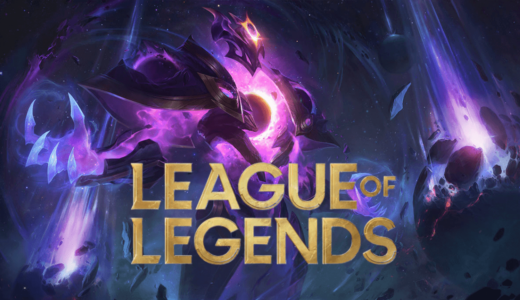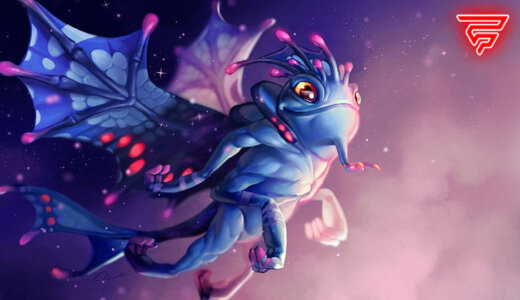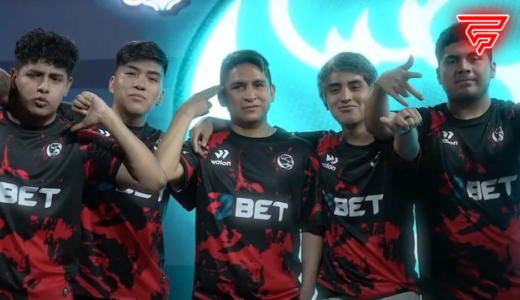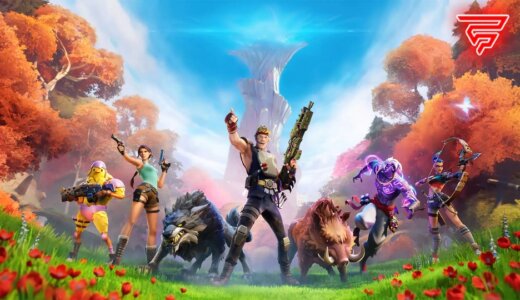League of Legends is a popular multiplayer online battle arena game that features various champions, each with their unique abilities, strengths, and weaknesses. One of the most exciting aspects of the game is the presence of dragons, which players can encounter and defeat to gain valuable buffs and advantages.
Dragons are powerful neutral monsters that spawn in the game every five minutes, starting from the 5-minute mark. There are four types of dragons in League of Legends, each with their unique abilities and buffs. The first dragon is the Infernal Drake, which provides bonus attack damage and ability power to the team that defeats it. The second dragon is the Ocean Drake, which grants health and mana regeneration to the team. The third dragon is the Cloud Drake, which gives the team increased out-of-combat movement speed. Finally, the fourth dragon is the Mountain Drake, which provides bonus true damage to epic monsters and turrets.
Defeating dragons is a crucial objective for teams in League of Legends, as they provide valuable buffs that can help them gain an advantage over their opponents. However, dragons are not easy to defeat, and players must work together and use their champion’s abilities strategically to take them down. With their unique abilities and buffs, dragons add an exciting and challenging element to the game, making it even more engaging and enjoyable for players.
Overview of Dragon League of Legends
In League of Legends, Dragon is a powerful neutral monster that spawns in the Dragon Pit located in the lower river of Summoner’s Rift. It is a highly contested objective for both teams as it provides various buffs and advantages to the team that successfully defeats it.
There are currently seven different types of Dragons in the game, each with its unique abilities and buffs. The Dragons are divided into two categories: Elemental Dragons and Epic Dragons. Elemental Dragons include Cloud, Infernal, Ocean, Mountain, Hextech, and Chemtech Dragons. Each Elemental Dragon provides a stack of the Dragon Slayer buff, which grants various bonuses to the team that kills it. Epic Dragons, on the other hand, provide a significant advantage to the team that defeats them, such as the Elder Dragon’s Dragon Soul buff.
The first Dragon spawns at five minutes into the game, and after that, a new Dragon will spawn every six minutes after it has been defeated. The Dragons become more challenging to defeat as the game progresses, with the final Dragon, the Elder Dragon, being the most challenging and rewarding.
Teams must carefully strategize and prioritize their objectives, as taking down a Dragon can be a risky and time-consuming task. However, the rewards that come with defeating a Dragon can be game-changing, and it is often a crucial factor in determining the outcome of a match.
Overall, Dragons are an integral part of League of Legends gameplay, and teams that can successfully secure and defend them often have a significant advantage over their opponents.
History of Dragon League of Legends
Dragons have been an integral part of League of Legends since its inception. In the early days of the game, there was only one type of dragon that would spawn in the Dragon Pit, and killing it would grant a team a small amount of gold. However, over time, the game developers have added more dragon types with different abilities and rewards.
The first major change to the dragon occurred in Season 5, when the game developers introduced four new types of dragons: the Infernal, Ocean, Mountain, and Cloud dragons. Each dragon type provided a different buff to the team that killed it, such as increased damage, movement speed, or regeneration.
In Season 6, the game developers introduced the Elder Dragon, which would spawn after a team had slain three of the four elemental dragons. The Elder Dragon provided a massive buff to the team that killed it, increasing the power of all of their other dragon buffs and dealing true damage to enemy structures.
In Season 10, the game developers introduced the Dragon Soul mechanic, which would grant a team a permanent buff based on the type of dragons they had slain. For example, if a team had slain four Ocean dragons, they would receive a permanent buff that increased their health and mana regeneration.
Overall, the history of dragon League of Legends is one of constant evolution and change. The game developers have added new dragon types and mechanics over the years, keeping the game fresh and exciting for players.
Types of Dragons in League of Legends
League of Legends features several types of dragons, each with unique abilities and strengths. These dragons spawn every 5 minutes starting from 5:00 and provide powerful bonuses to the team that slays them. Here are the different types of dragons in League of Legends:
Elder Dragon
The Elder Dragon is the most powerful dragon in League of Legends. It provides a team-wide buff that amplifies all previous dragon buffs and deals true damage to towers, epic monsters, and minions. This buff lasts for 150 seconds and can only be obtained after slaying four other dragons.
Cloud Drake
The Cloud Drake provides a movement speed bonus to the team that slays it. This bonus increases with each subsequent Cloud Drake killed and can stack up to three times.
Infernal Drake
The Infernal Drake provides a damage boost to the team that slays it. This bonus increases with each subsequent Infernal Drake killed and can stack up to three times.
Mountain Drake
The Mountain Drake provides a shield to the team that slays it. This shield increases in strength with each subsequent Mountain Drake killed and can stack up to three times.
Ocean Drake
The Ocean Drake provides a health and mana regeneration bonus to the team that slays it. This bonus increases with each subsequent Ocean Drake killed and can stack up to three times.
In conclusion, each dragon in League of Legends provides unique bonuses to the team that slays it. Teams must strategize and prioritize which dragons to kill based on their strengths and weaknesses.
Dragon’s Role in Gameplay
Dragons are important neutral objectives in League of Legends that can provide significant buffs to the team that defeats them. There are four types of dragons: Infernal, Ocean, Mountain, and Cloud. Each type of dragon provides a unique buff that can help a team gain an advantage over their opponents.
Dragon Buffs
The Infernal Dragon provides a buff that increases the team’s ability power and attack damage. The Ocean Dragon provides a buff that restores health and mana to the team over time. The Mountain Dragon provides a buff that increases the team’s armor and magic resist. The Cloud Dragon provides a buff that increases the team’s out-of-combat movement speed.
If a team is able to defeat multiple dragons of the same type, they will unlock a Dragon Soul, which provides an even stronger version of the corresponding buff. For example, if a team defeats four Mountain Dragons, they will unlock the Mountain Dragon Soul, which provides an even greater increase in armor and magic resist.
Dragon Control
Controlling the dragon pit is an important part of gameplay in League of Legends. Teams will often prioritize taking down the dragon as a group, or defending it from the enemy team. Vision control around the dragon pit is also important, as it allows a team to see when the enemy team is attempting to take the dragon, or to set up an ambush.
Teams will often make strategic decisions about when to attempt to take the dragon. For example, if a team is behind in gold and experience, they may prioritize taking the dragon in order to gain a buff that will help them catch up. Conversely, if a team is ahead, they may choose to delay taking the dragon in order to deny the buff from their opponents.
In summary, dragons play a crucial role in the gameplay of League of Legends. Teams must prioritize controlling the dragon pit in order to gain the buffs provided by the different types of dragons, and to deny those buffs from their opponents.
Strategies for Dragon Encounters
In League of Legends, securing dragons can provide significant advantages for a team. However, it is important to approach dragon encounters with a strategy in mind to avoid unnecessary risks. Here are some strategies to consider:
Prioritize Drakes
Different types of dragons provide different types of buffs, so it is important to prioritize which dragons to secure based on the team’s composition and goals. For example, the Infernal Drake provides a significant increase in damage, while the Ocean Drake provides health regeneration. Prioritizing drakes can help a team gain an advantage in team fights and objectives.
Control Vision
Having vision control around the dragon pit is crucial to securing dragons. This allows the team to spot enemy movements and prevent them from stealing the dragon. Warding key areas around the dragon pit, such as the river and jungle entrances, can help maintain vision control.
Coordinate with the Team
Securing a dragon requires coordination and communication with the team. It is important to have lane priority, meaning that the team has pushed the minion wave towards the enemy tower, to prevent the enemy team from contesting the dragon. The team should also be aware of the enemy jungler’s location and potential threats to the dragon.
Use Smite Wisely
Using Smite during a dragon encounter can secure the dragon and prevent the enemy team from stealing it. However, it is important to use Smite wisely and not waste it on other targets. It is also important to time Smite properly to ensure that it is available during the dragon encounter.
Be Aware of Enemy Champions
Certain enemy champions, such as Nunu or Cho’Gath, have abilities that can steal the dragon or deal significant damage to the team. It is important to be aware of these champions and adjust the strategy accordingly. For example, the team may want to focus on eliminating these champions before attempting to secure the dragon.
By prioritizing drakes, controlling vision, coordinating with the team, using Smite wisely, and being aware of enemy champions, a team can increase their chances of successfully securing dragons in League of Legends.
Impact of Dragons on Meta Game
Dragons have always been an integral part of the League of Legends game. They not only provide players with gold and experience but also offer powerful buffs that can help them win the game. The impact of dragons on the meta game has evolved over the years, and players need to understand the importance of each dragon to make the most of their benefits.
The recent changes in patch 12.14 have made elemental dragons even more critical in the game. Riot Games has increased the health of all elemental dragons and reduced their attack, making team fights around the dragon pit longer and more strategic. As a result, players are now more inclined to concede early objectives to reach their late game.
Each dragon provides a unique buff that can significantly impact the game’s outcome. Mountain Dragon is currently the strongest dragon in the game, providing shields that make it easier for teams to win skirmishes and team fights. Infernal Dragon is also a solid dragon, offering an extra damage buff that can make a significant difference in the late game.
Cloud Dragon provides a movement speed buff that can help teams move around the map faster, making it easier to control objectives. Ocean Dragon provides health and mana regeneration, which can help teams sustain in prolonged fights.
Players need to understand the importance of each dragon and adjust their gameplay accordingly. For example, if a team composition is focused on early game aggression, they should prioritize getting the Infernal Dragon buff. On the other hand, if a team has a composition that excels in prolonged fights, they should prioritize getting the Ocean Dragon buff.
In conclusion, the impact of dragons on the meta game is significant, and players need to understand the importance of each dragon to make the most of their benefits. With the recent changes in patch 12.14, dragons have become even more critical in the game, and players need to adjust their gameplay accordingly to win.
Famous Dragon Plays in Esports History
Dragons are one of the most important objectives in League of Legends, providing various benefits to the team that kills them. Over the years, there have been many memorable plays involving dragons in esports history. Here are some of the most famous ones:
1. SK Telecom T1 vs Samsung Galaxy (2016 World Championship Finals)
In the fifth and final game of the 2016 World Championship Finals, SK Telecom T1 and Samsung Galaxy were locked in a tense battle. With the game evenly poised, both teams knew that the next dragon kill could be the deciding factor. In a pivotal moment, SK Telecom T1’s jungler, Kang “Blank” Sun-gu, stole the dragon away from Samsung Galaxy with a perfectly timed smite. This gave his team the momentum they needed to win the game and secure their third World Championship title.
2. Invictus Gaming vs Fnatic (2018 World Championship Finals)
In the second game of the 2018 World Championship Finals, Invictus Gaming and Fnatic were fighting for control of the dragon pit. With both teams positioning themselves for a team fight, Invictus Gaming’s mid laner, Song “Rookie” Eui-jin, landed a game-changing ultimate ability that stunned multiple members of Fnatic. This allowed his team to secure the dragon kill and win the ensuing team fight, giving them a significant advantage in the game.
3. G2 Esports vs SK Telecom T1 (2019 Mid-Season Invitational Semifinals)
In the first game of the 2019 Mid-Season Invitational Semifinals, G2 Esports and SK Telecom T1 were engaged in a close contest. With both teams vying for control of the dragon pit, G2 Esports’ support player, Mihael “Mikyx” Mehle, made a daring play. He used his champion’s ultimate ability to knock multiple members of SK Telecom T1 away from the dragon, allowing his team to secure the kill and win the ensuing team fight. This play helped G2 Esports secure a crucial victory on their way to winning the tournament.
These are just a few examples of the many famous dragon plays in esports history. Whether it’s stealing a crucial kill or winning a decisive team fight, dragons have provided some of the most memorable moments in League of Legends history.
Frequently Asked Questions
What are the different types of dragons in League of Legends?
There are four different types of dragons in League of Legends: the Infernal Dragon, the Ocean Dragon, the Mountain Dragon, and the Cloud Dragon. Each type of dragon provides a different buff to the team that slays it.
How do you kill the Elder Dragon in League of Legends?
The Elder Dragon is a powerful dragon that appears on Summoner’s Rift after a certain amount of time has passed. To kill the Elder Dragon, a team must have a strong composition and be well-coordinated. The Elder Dragon provides a powerful buff to the team that slays it, so it is often a high priority objective.
What is the importance of taking dragons in League of Legends?
Taking dragons is important in League of Legends because each type of dragon provides a unique buff that can help a team win the game. For example, the Infernal Dragon provides increased ability power and attack damage, while the Ocean Dragon provides increased health and mana regeneration.
Which champion is best for killing dragons in League of Legends?
There is no one champion that is best for killing dragons in League of Legends. However, champions with high damage output and good sustain are often good choices for taking dragons. It is also important to have a strong team composition and good coordination when taking dragons.
What are the benefits of killing dragons in League of Legends?
Killing dragons provides a number of benefits in League of Legends. Each type of dragon provides a unique buff that can help a team win the game. Additionally, killing dragons grants gold and experience to the team that slays them.
How often do dragons respawn in League of Legends?
Dragons respawn every 5 minutes in League of Legends. After a dragon is killed, a new dragon will spawn at the dragon pit after 5 minutes have passed. It is important to keep track of dragon respawn times so that a team can be prepared to take them when they respawn.







